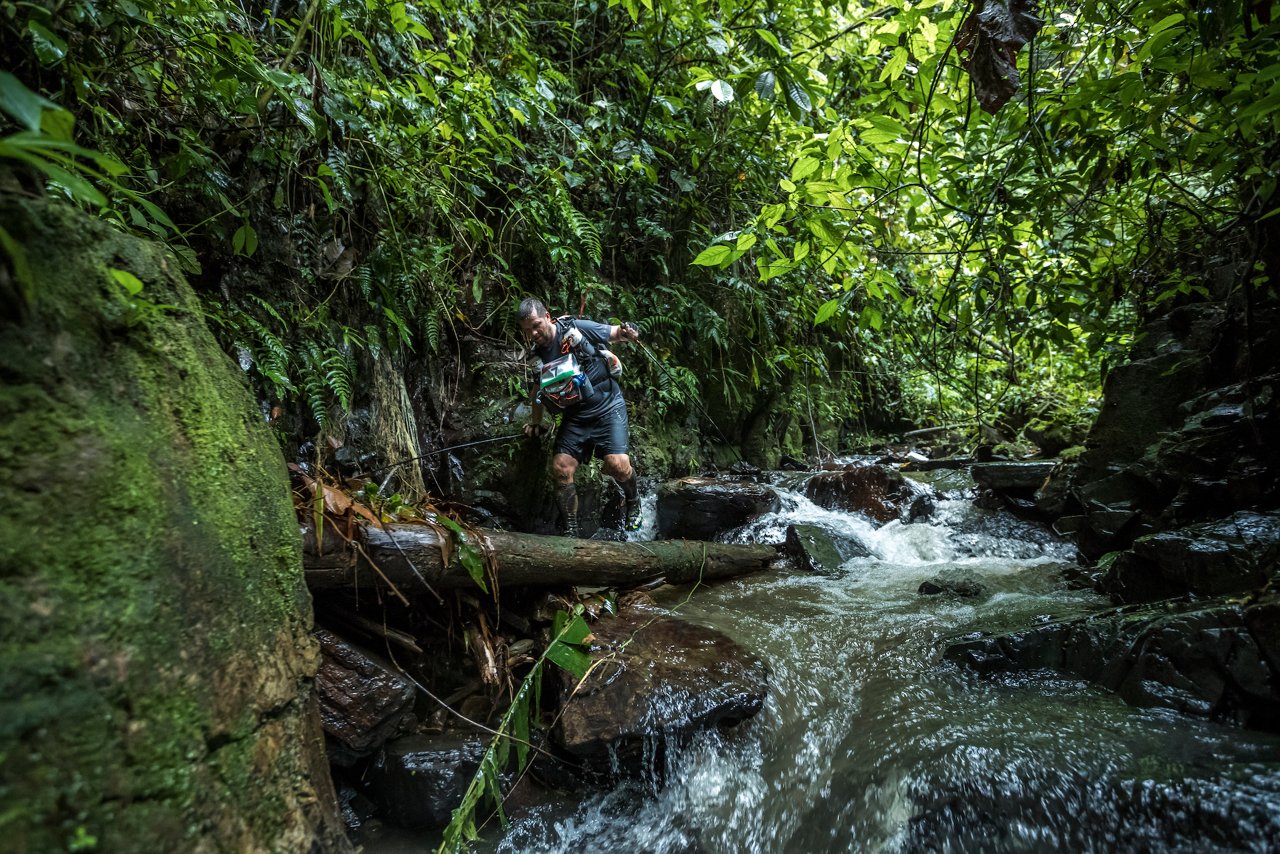
# Running
Backward running
Thanks, but i'll take the stairs - Thomas Dold about the fascination of backwards - and stair running
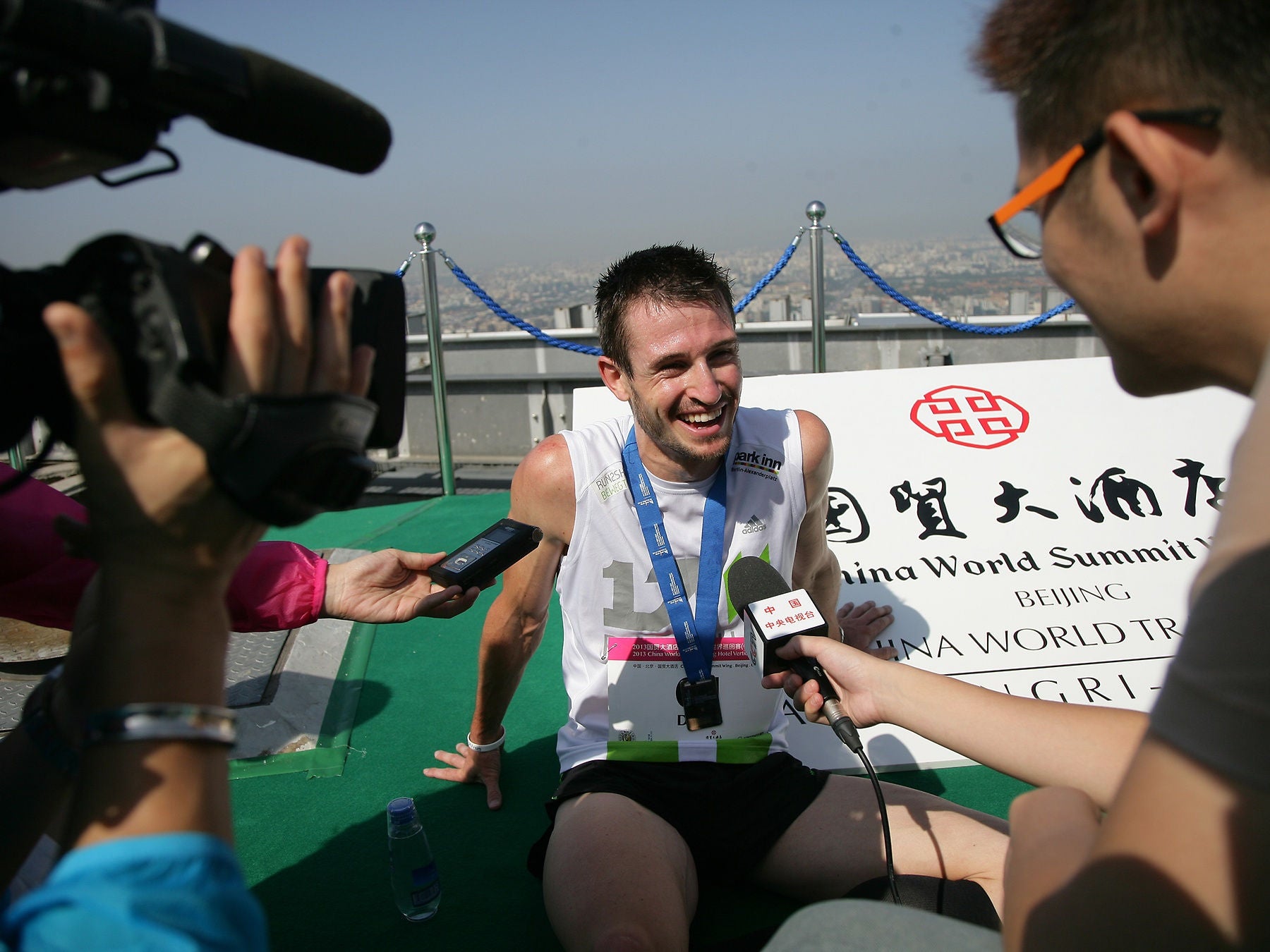
With seven world records in backwards running and 45 stair-running titles under his belt, it could be said that Thomas Dold chases victories of the more unusual sort. In an interview with Continental GripWorld, he talks about why every athlete should run backwards occasionally, what’s so special about stair running, and his connection to German television legend Thomas Gottschalk.
Thomas Dold, thanks for finding the time to call us at such short notice. You’re in the train right now?
That’s right – I’m on my way to do some training in Frankfurt. I have special permission to run in the Main Tower, which is the highest skyscraper in Germany – it’s around 200 meters tall. The stairwell of the tower is perfect for training. They’re my favorite stairs – 52 floors and a thousand steps that I’ve run up thousands of times.
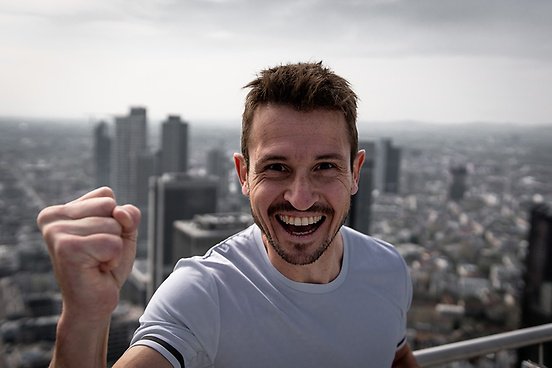 Thomas Dold is one of the world’s most successful athletes. He holds seven world records in backwards running and a total of 45 first-place finishes in stair running. Photo: Marcel Meister
Thomas Dold is one of the world’s most successful athletes. He holds seven world records in backwards running and a total of 45 first-place finishes in stair running. Photo: Marcel Meister
You live in the country. It must be tough out there with so few tower blocks...
Yes, you could say that (laughs). If I lived in a big city it would definitely be better for training and make a lot of things easier. There is a long flight of steps near where I live, in a vineyard. It’s 90 meters to the top, and getting there is quite a workout! But the truth is, you can only train for stair running on real stairs in a building. The stairways there are steeper, longer, and higher. The point is to put on your running shoes and see how many stories you can climb at your race pace. And to do that, I need a stairwell like the one in the Main Tower.
You hold seven world records in backwards running and have racked up 45 wins in stair running. What on earth make you decide to take up these two disciplines?
I grew up in the foothills of the Black Forest. And in the Black Forest, we have mountains. So that was where I started running. In 2003 I tried backwards running for the first time, and I was hooked right away. As for the stair running, it’s not a huge leap from running up mountains to running up stairs. That just sort of happened. I was 18 and looking for new challenges.
Help us understand what a stair running race looks like. Isn’t it a bit claustrophobic, racing up a narrow stairway with dozens of other runners?
Most stairwells are indeed a bit tight, at least for holding a race. There isn’t really ever enough room for two people to run next to each other. In New York, where I’ve won the most races, you actually have 100 people simultaneously dashing toward the first step. And to get into the stairwell, they all have to run through the same door – which is just your normal, average-size door. So of course there’s a bottleneck. Everyone squeezes through, one after another, like passing through the eye of a needle.
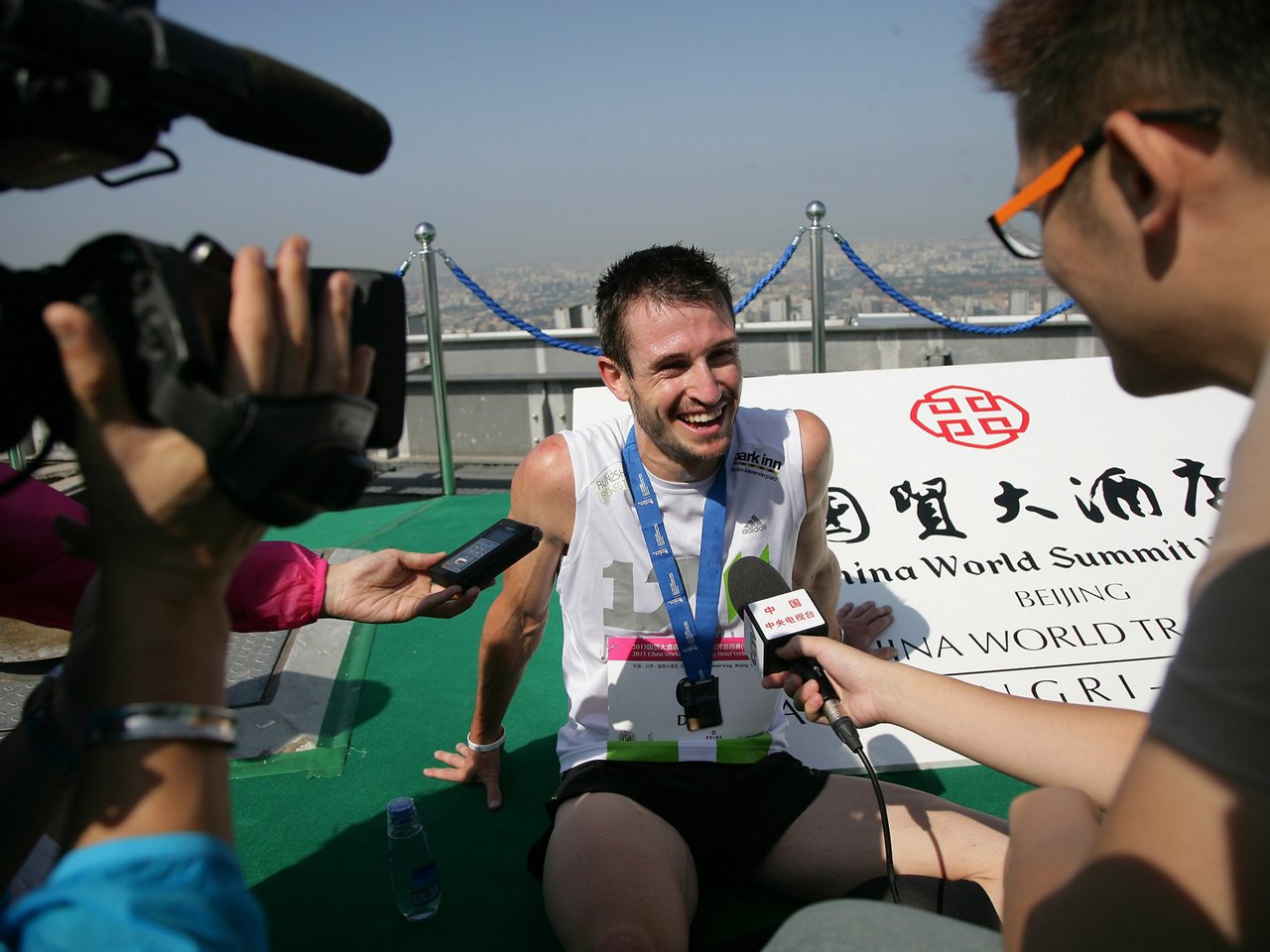
Plus every stairwell is designed differently. How does that affect your running strategy? Do you even have one?
At the end of the day, the best strategy is usually just to try to run to the top as quickly as you can. What gives you an edge is not how well you know the building, but what you learn from experience.
When you look at stairs now, do you ever just see them as a normal way to get around in a building? Or when you are on vacation in Paris, do you feel the urge to climb the Eiffel Tower in record time?
Of course I see stairs differently. A lot of people associate stairs with exertion. And I do, too – but also with happy moments. Which makes it easier for me to take the stairs more often. I don’t have a mental barrier to stop me. That’s an advantage, but it’s one that everyone can learn. Everyone can make the decision to say – no matter how many steps they have to climb – thanks, but I’ll take the stairs; I’ll get some exercise. Anyway, elevators are too slow. By the time they get there and stop at every floor, I’ve already climbed the stairs to wherever I want to go. And I’ve gotten some exercise as well. But I personally don’t feel like I have to run up every flight of stairs. I would have no problem walking up the stairs of the Eifel Tower at a leisurely pace!
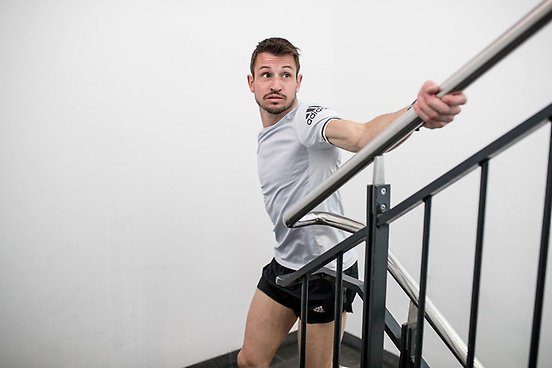 Thomas Dold training in the stairwell of the Main Tower in Frankfurt. Photo: Marcel Meister
Thomas Dold training in the stairwell of the Main Tower in Frankfurt. Photo: Marcel Meister
Let’s talk about running backwards. You ran your first race at the German championships with no preparation – and won. How is that even possible?
It was kind of spontaneous. I had trained once, simply so I could see how backwards running even worked. And then I just entered the race in the “women and children” category. I was really fast and crossed the finish line in just 4:07 minutes.
Usually the winner of the pro race is also the overall winner. But the pro runner was actually six seconds slower. The race organizers couldn’t believe it, either – that one of the amateurs had run so quickly. Suddenly I was the German champion. But back then you could still win with times that wouldn’t stand a chance today. Nowadays I run every single kilometer of a 10k race at an average pace that’s 20 seconds faster. My world-record time for a kilometer is 3 minutes 18 seconds.
When you’re running backwards, don’t you keep bumping into things – or other runners? And don’t you get a stiff neck from looking over your shoulder all the time?
No – I don’t get a stiff neck because I don’t look behind me. I have someone on a bike to guide me. I can see him, and he can see what’s happening behind my back. So he tells me if I’m going to run into anything. Of course that makes it mentally challenging. You have to trust your partner completely; he’s serving as my eyes, so to speak. And above all, you have to trust yourself. Running backwards is a great way to build self-confidence.
How do people usually react when you say you prefer to run backwards?
A lot of people find the idea of backwards running pretty funny. But when I tell someone whose hobby is running that my 10k time is 38:50 minutes, they are pretty amazed, because my backwards time beats their forwards time! I train a lot, after all. And wanting to try out new things is in my blood. Backwards running is not a widespread sport. There aren’t dozens of books about it, so you have to figure it out for yourself. You’re the only one who can improve your performance. That’s not something everyone can do, but it’s a useful asset at work, particularly if you’re in a leadership role. Backwards running can actually help you develop the leadership skills you need.
You once said that it’s only possible to deliver peak performance when you have achieved inner equilibrium, when your body and mind are in balance. How do you achieve this balance?
Balance really does play an important part. Backwards and stair running are very important for the physique. Stair running is extremely good for building strength in the upper body, torso, and legs. And backwards running is a great alternative for exercising your back – which in turn gives you an edge when you are running forwards. I can really recommend it to all athletes. To achieve mental balance, you probably need to do a bit more than just stair and backwards races. What’s important here is self-reflection, a sense of humor, and a positive attitude toward life. This gives you the resilience to cope with setbacks.
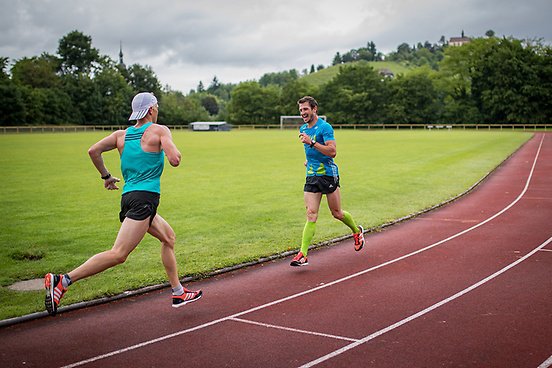
A lot of athletes are fixated on breaking records, and they aren’t the only ones. Why are people so obsessed with being the best?
I think that it’s a basic human urge. If we weren’t driven to keep improving ourselves, our civilization would look very different today – we’d probably still be moving around on all fours.
But luckily at some point somebody realized that walking is better than crawling. This drive to keep getting better at things is something you see in children most of all. I often think that some adults have lost this drive somewhere along the way. Of course there are other, external factors. At a lot of running events I’ve noticed that every participant gets a medal, children and adults alike. That’s great, of course, when everyone has their medal and their certificate. On the other hand, if only the first-, second-, and third-place finishers get a medal, those medals are valued more highly. The aspiration to achieve something special and to be rewarded for it is something that all human beings share. And the ability to keep improving is extremely useful, not just in sports, but in all aspects of life.
In 2008 you had a very unusual experience. In the German television show “Wetten, dass…” (“Wanna bet?”), hosted by Thomas Gottschalk, you went head to head against a ‘builderer’ – an urban climber. Rene Gabris scaled the outside of a skyscraper while you ran up the stairs inside. In the end your opponent beat you by 3 seconds and you had to face defeat in front of an audience of millions...
That was my finest defeat ever. It was a thrilling experience. For one thing, it was one of the most elaborate outdoor challenges that the show ever held. My opponent received more than 56 percent of viewer votes for the best bet in the show, reflecting what a nail-biting contest we offered the audience. And after all, “Wetten, dass...” wasn’t a sports program; it was a variety show, and Thomas Gottschalk is a legend in Germany. So at the end of the day, winning wasn’t the most important aspect of the experience for me. Personally, it was more important when I won a race in Singapore the following week. The television show was just great fun.
And when will you do your first backwards stair run?
(Laughs) I am still desperately seeking a coach and ironing out the kinks in my style. All joking aside, backwards stair running is not even anatomically possible! Not at a competitive level, at least. You’d have to stand on the ball of your foot while lifting your heel toward the next step. That would be suicide at a high speed.
